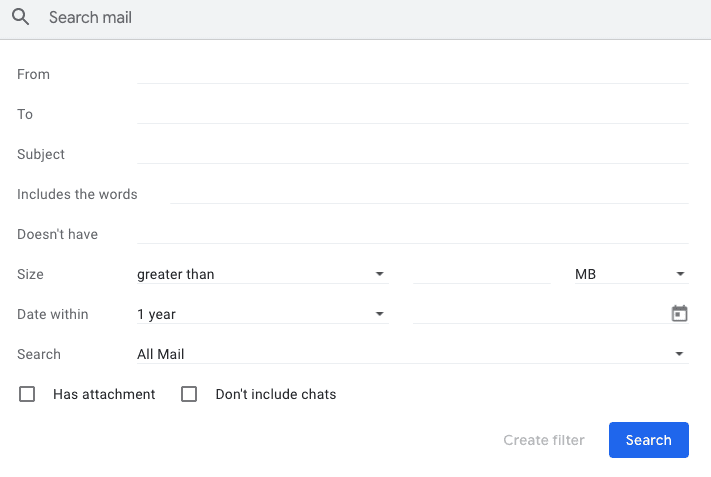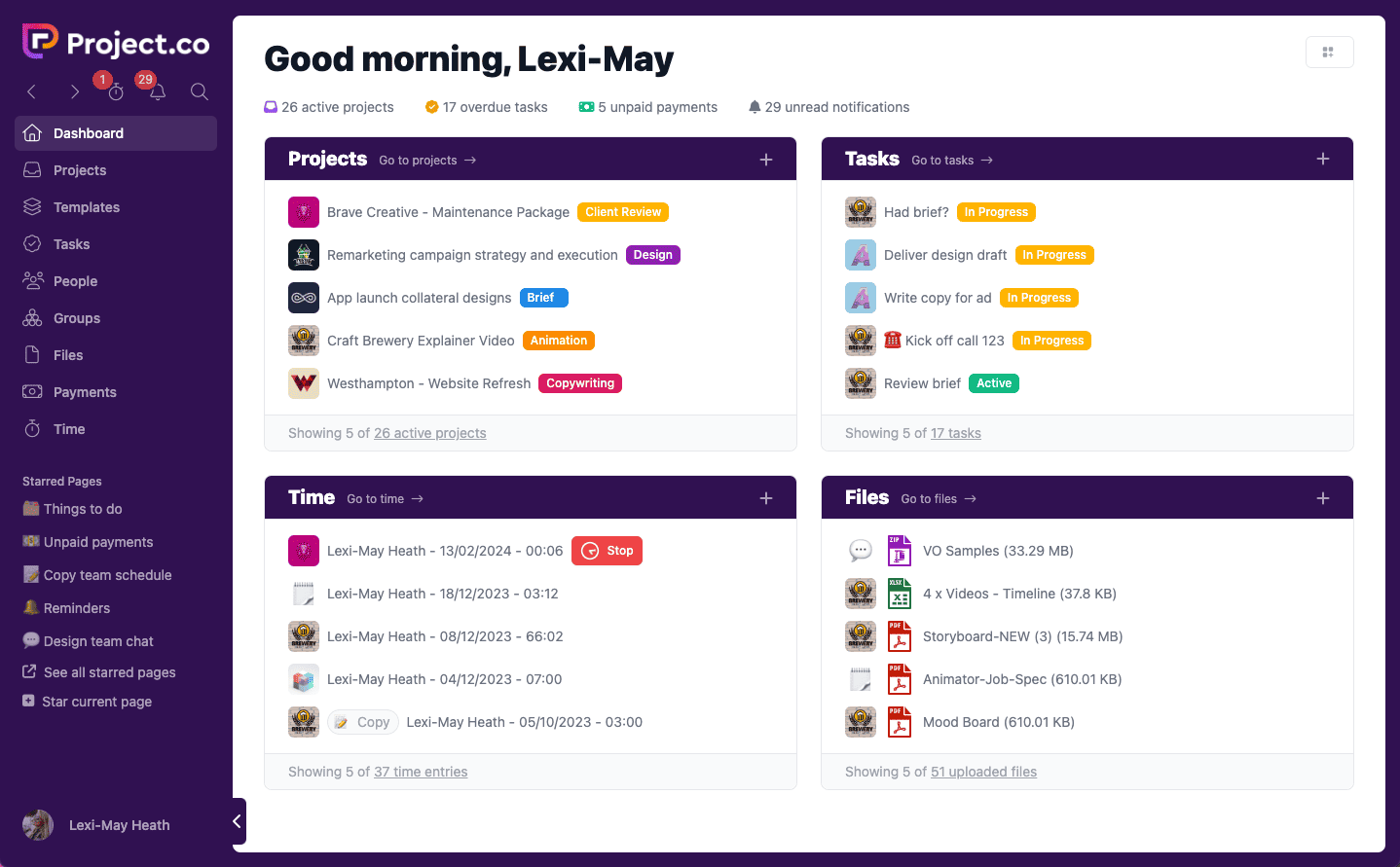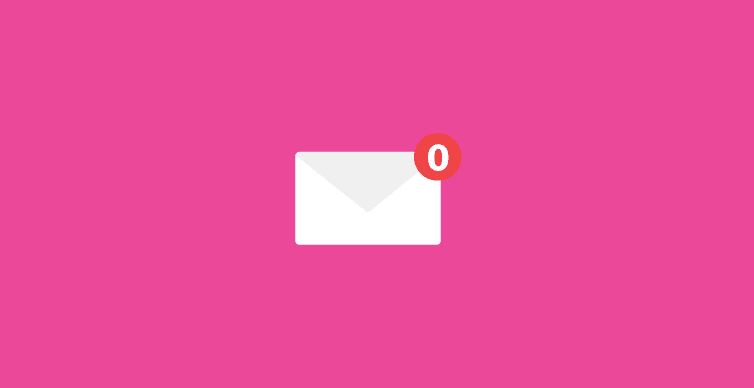Last updated on 14th June 2024
Email dominates the world of communication.
So why does it feel so overwhelming? So unproductive? So chaotic?
Truth is, email has become an ugly habit. Once upon a time, people checked their (physical!) mailboxes once – in the morning, or when the post arrived.
Modern studies suggest we check our inbox – the digital equivalent – around 15 times per working day, or every 37 minutes on average. It disrupts our work, breaks into our ‘flow’ state and often stops us from focusing on what’s really important on our to-do list.
Inbox zero was coined as a model to overcome this, harnessing the full potential of email and using other tools and processes to finally make it work for us.
What is inbox zero?
‘Inbox zero’ is a term coined by productivity expert Merlin Mann, who wrote the book “Inbox Zero: Cutting Through the Crap to Do the Work That Matters.”
It was described as ‘revolutionary’ by The New Yorker and saw Mann given the platform to stage a Google Tech talk, but the concept has been quite widely misunderstood.
Some have interpreted inbox zero as the idea that you should treat your inbox as a sort of ‘to-do’ list – with each email needing to be addressed, actioned and filed or deleted before the end of each day. That you should, in essence, empty your inbox – get it down to zero – every day.
But Mann himself pointed out years later that the zero referred not to an empty inbox, but “the amount of time an employee’s brain is in (their) inbox.”
In other words, it isn’t necessarily a case of emptying your inbox at the end of every day – although this would be great – but rather, finding ways to seriously reduce the influence email exerts over your working time and task list.
So…should you go inbox zero?
As with any model or philosophy, people have debated the pros and cons of inbox zero.
Some have adopted the ‘literal’ interpretation, aiming for an ‘empty inbox’ and feeling that this gives them peace of mind that everything is dealt with, with nothing slipping between the cracks.
Others who adopt this interpretation feel that it’s unrealistic and dismiss the idea altogether. They argue passionately that it’s fundamentally unachievable to do everything and will hurt productivity rather than helping it. Some argue that spending time in email is a necessity rather than a choice.
Our take is quite simple.
Eliminating email altogether is a bridge too far, although it would probably help. It’s far too entrenched as a communication tool to expect people to dump it completely.
But email shouldn’t be the be-all and end-all of your work management.
And inbox zero is a healthy step towards reducing your reliance – and time spent – on email.
8 steps to get to inbox zero
So let’s talk specifics. How do you get there?
1. Triage your existing inbox
The first step is a decluttering of the emails you already have – which can seem overwhelming, particularly if you’ve let things get on top of you in the past.
This is all about being decisive to the point of brutality. Whichever email client you use will probably have some sort of filtered search function where you can identify emails that are old, already dealt with, and generally unlikely to require any further action or response.
For example, if you’re a Gmail user, click the dropdown arrow on the search bar and you’ll get a range of options to find emails that are ready to be deleted. Let your email tool do the heavy lifting for you.

This will avoid the awkwardness of picking through every individual email and making a decision on every single one. Remember, if you delete something important – likelihood is, somebody is gonna chase it at some point anyway, so don’t ‘horde.’
2. Start to triage new emails.
Now, once you’re on top of your existing emails, you need to change the way you deal with the incoming stuff.
Merlin Mann describes the actions available as being (quite confusingly) 4 D’s, and one R!. They are:
Delegate – if it can be dealt with by somebody else, forward and archive/delete
Respond – in some cases, it’s common courtesy to at least acknowledge receipt and advise what’s next. Do this immediately and don’t leave tedious replies on your ‘to-do’ list, or worse, let it stop you actioning the email.
Defer – if it can wait, set up an action point in your task list for a future date, and move on.
Do – if you can action the whole email and get the whole thing, plus any associated jobs, out of your in-tray in 2 minutes or less, do it as soon as you read it.
3. Keep your email program closed most of the day
Now that we have a tidier inbox – and a system for dealing with incoming messages – we need to try and break the reliance on email throughout the day.
We mentioned in the introduction to this article that most people check their emails 15 times a day – this just isn’t good for productivity.
So break away from the constant interruption of popup emails by turning off alerts, and resisting the temptation to check your inbox away from specified periods.
4. Use a project management tool
Email is an effective way for people to reach you – but let’s be clear: it’s deeply flawed as a way to manage projects, tasks and project communication. Not only is information badly siloed in private inboxes, it’s just so easy for tasks to be missed, and becomes impossible for teams to get visibility over who’s working on what, when.
If you’re using your inbox, email flags, and other fiddly functionality to manage your day, stop it right now(!) and look into trying out a project management system as a matter of urgency.
A project management system allows you to keep all projects in one place…

…with tasks assigned to dates and people, with clear visibility across your team…

So, in theory, let’s say you receive an email which suggests doing an audit of your website content. Previously, you might have flagged that, left it for later, added it to a paper to-do list, and watched helplessly as new emails came in like an unstoppable deluge, burying the work and ensuring your content remains very much unaudited.
Using a project management tool – and some of the pointers we’ve outlined already – you could instead:
- Check your inbox in the morning, your allotted inbox checking time.
- See the email about a content audit.
- Reply to acknowledge receipt and tell the sender that you think it’s a good idea and will start things off.
- Head to your project management tool and quickly, effortlessly set up a project.
- Invite any people who need to be included in that project.
- Check your scheduler/task list to understand where this work fits in realistically.
- Set up a task at this date and assign it to yourself (or whoever else needs to do the work)
- Use the ‘Tasks’ section of your PM tool to inform your daily to-do list so no tasks are ever missed.
- Delete the email, do the work when it’s due – and then use built-in file-sharing, embed and communication tools to manage the project properly, with full visibility for everyone in the team.
Just with this simple example, you can see how powerful and effective it is to ‘buttress’ email with a project management tool that lets you schedule work and communicate properly.
5. Collaborate in real-time using a tool like Slack
There are times when people will need to ask you questions on the fly – it’s an inevitable part of working in a team.
If you work in a physical office together, there’s always the option for somebody to come and see you at your desk.
But if you work remotely, or just prefer digital communication, we recommend using a tool like Slack or real-time communication with no waiting around. This is great because every message that comes through Slack should be super-quick, near immediate, to respond to – and would otherwise have been an email, further cluttering your inbox and taking away your focus on tasks.
6. Consider creating templates/scripts
As we’ve already established, the essence behind inbox zero is to spend less time in your inbox.
One of the easiest ways to waste time is to write the same thing several times a day/week. Do you find yourself manually writing receipts, or explaining processes? Manually running through tasks or to-do’s?
It’s a simple tip, but you can address this by creating scripts you can copy and paste to reply to the most common emails you receive.
Gmail users will know that the software uses AI and machine learning to understand what the likely ‘quick’ responses to an email might be – so you can click them, and get a reply over ASAP. This, again, is simple stuff, but they’re there – so use them!

7. Identify (and eliminate) sources of unwanted correspondence
Another super quick one here, but it’s going to help in giving you less email to wade through.
One of our triage ‘D’s was to delete – and of course, it’s easy to delete unwanted email.
But it’s even easier to stop it at the source.
Be mindful of the emails you’re repeatedly deleting and ask yourself: is there any way to stop them?
Perhaps there’s some newsletters you get that you could unsubscribe from.
8. Ditch the email filing system
A lot of people, when writing about how to declutter your inbox, will talk about how to use filing systems to make your emails more easily navigable and accessible.
And on the surface, this seems to make sense. But it’s counterintuitive. Because the quickest, best and easiest way to find email is almost always through keyword search. The actual file or folder an email lives in can make it more difficult to find a file, rather than searching for an email in one particular ‘archive’ folder or your main inbox.
One folder – ‘Done’ or ‘Archived’ – should be plenty, while you continue your best efforts to get your inbox to zero (or as close as possible!)
Final thoughts
Inbox zero is a smart model for spending less time and energy on your inbox. We all know, from painful experience, that email – while not without its benefits – has the potential to really consume our day, make us miss important tasks and generally waste time we don’t have spare.
– Start by triaging your existing emails
– Develop a simple system for triaging ‘new’ emails so nothing gets missed – this clarity will save huge amounts of time.
– Only check your email as regularly as you need to. For most people, 2-3 times per day should be enough.
– Underpin email with a project management system so that your tasks, communication and projects are properly organised and not reliant on flimsy email flags and priority lists.
– Use Slack to so people can reach you without sending email (your inbox will thank you for it.)
Identify sources of email that constantly waste your time, and block/unsubscribe or redirect them. On a compound level, a few seconds or a minute every day can add up over time to make a big difference.
– Use scripts and templates to automate and save time on repeatable tasks.
– Don’t worry about filing systems, they just waste time and add unnecessary complexity.
If you’re looking for a project management tool to help along the way – create your free Project.co account today!


